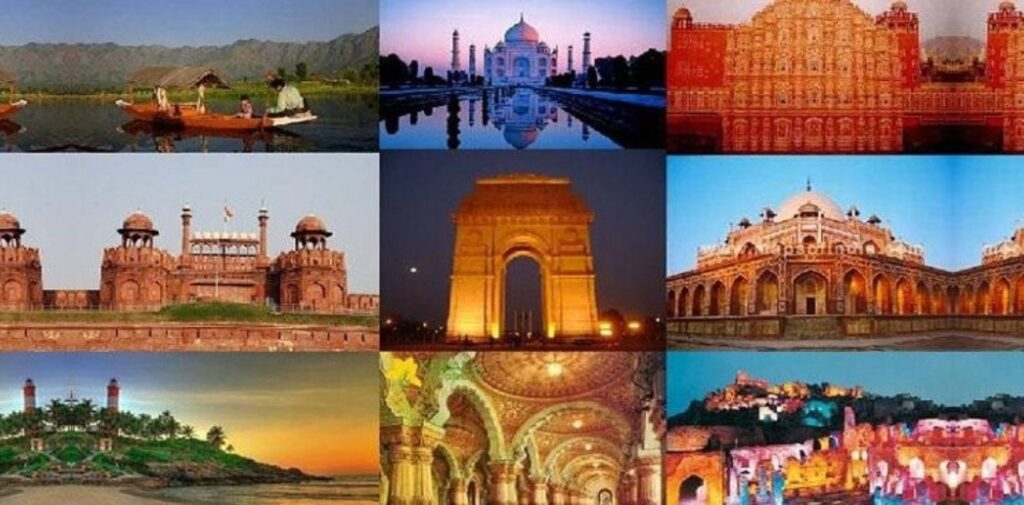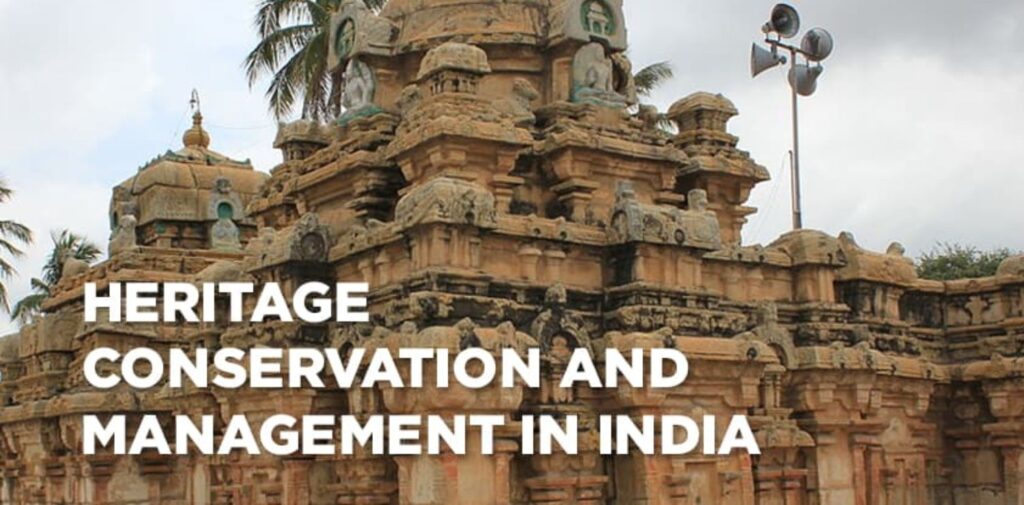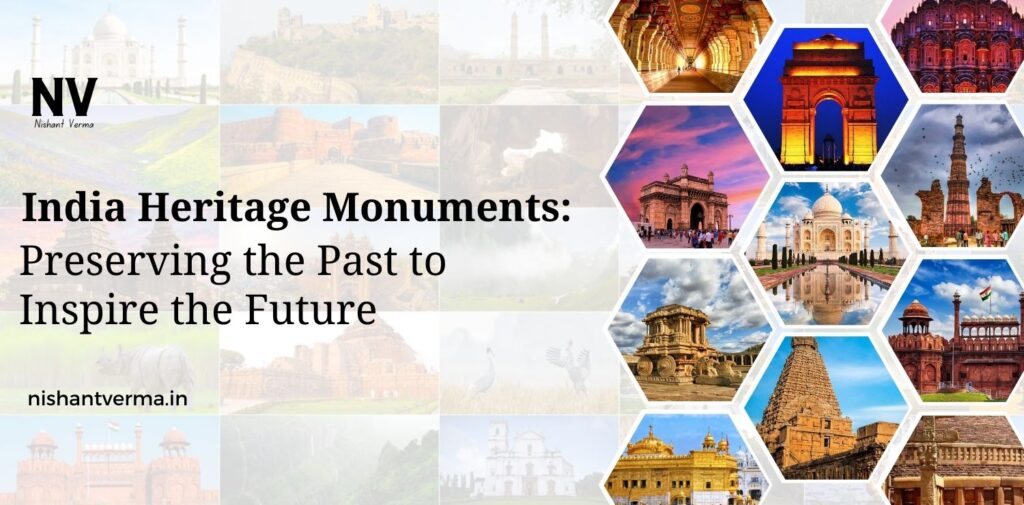India, a land of diverse cultures, traditions, and histories, is home to some of the most magnificent and awe-inspiring monuments in the world. From the majestic forts of Rajasthan to the intricate temples of South India, these heritage monuments tell the story of India’s rich past, its royal legacy, and the artistic brilliance of its people. Preserving these monuments is not just about maintaining old buildings; it is about safeguarding the stories of our ancestors and passing on their legacy to future generations. In this article, we will take a journey through India heritage monuments, understanding their significance and the importance of preserving them for the future.
Glory of India Heritage Monuments
India is a country where the past is never too far behind. Everywhere you go, there are monuments that take you back in time and fill your heart with pride. These monuments are not just stones and bricks; they are a reflection of India’s cultural, architectural, and historical journey.
Take, for example, the Taj Mahal, one of the Seven Wonders of the World. Located in Agra, this magnificent white marble mausoleum was built by Emperor Shah Jahan in memory of his beloved wife Mumtaz Mahal. The Taj Mahal is a symbol of eternal love and architectural brilliance, attracting millions of visitors from across the globe every year. Its delicate carvings, grand domes, and serene gardens are a testament to India’s rich Mughal heritage.
Then there’s the Qutub Minar in Delhi, a towering structure built in the 12th century. Standing at 73 meters tall, it is the tallest brick minaret in the world. The Qutub Minar is a UNESCO World Heritage Site and showcases the architectural prowess of the Delhi Sultanate. It’s not just a monument; it’s a reminder of the Islamic influence on Indian culture during the medieval period.

The ancient city of Hampi, once the capital of the Vijayanagara Empire, is another treasure trove of historical monuments. The ruins of Hampi, with its grand temples, majestic palaces, and massive boulders, are a reflection of the architectural splendour of the Vijayanagara kings. The Virupaksha Temple, the Vittala Temple, and the stone chariot are just a few of the many remarkable structures in Hampi that continue to captivate historians, archaeologists, and tourists alike.
In South India, the temples of Tamil Nadu stand as a living testimony to the greatness of Dravidian architecture. The Brihadeeswarar Temple in Thanjavur, built by Raja Raja Chola, is an architectural marvel with its towering spires, intricate carvings, and massive central dome. These temples not only serve as places of worship but also as magnificent works of art and history.
These are just a few examples of the many incredible monuments scattered across the Indian subcontinent. Each monument tells a different story, but they all share one thing in common: they are a window into the soul of India.
Why Preserving These Monuments is Important
India heritage monuments are not just about the past; they have an impact on the present and the future as well. Preserving these monuments is essential for several reasons:
- Cultural Identity: India is a diverse country with over a thousand languages, countless traditions, and a rich cultural heritage. The monuments we see today are a reflection of this diversity and help us understand the different cultures that have shaped India over the centuries. By preserving these monuments, we are ensuring that future generations can connect with their cultural roots and celebrate the country’s rich heritage.
- Historical Significance: Every monument has a story to tell. They are the silent witnesses of India’s history – from the rise and fall of empires to the triumphs and tragedies of kings, queens, and warriors. Monuments like the Red Fort, the Ajanta and Ellora caves, and the India Gate are important historical landmarks that help us understand the struggles, achievements, and transformations that India has gone through over the centuries.
- Tourism and Economy: Heritage tourism is a significant source of income for India. Tourists from all over the world visit India to explore its rich cultural heritage. The Taj Mahal alone attracts millions of visitors annually, contributing immensely to the local economy. By preserving these monuments, we ensure that future generations of tourists will continue to be mesmerized by India’s rich history and culture, bringing in revenue that can be used for further development and conservation.
- Educational Value: Heritage monuments are like open-air classrooms. They provide a wealth of knowledge about history, architecture, and culture. For students and scholars, these monuments offer a direct connection to the past, making history lessons come alive. Visiting these sites also encourages a sense of wonder and curiosity, inspiring young minds to learn more about the world around them.
- Environmental and Social Impact: Preserving heritage monuments is not just about saving old structures; it’s also about ensuring that the environment around them is protected. Many heritage sites are located in areas of natural beauty, such as mountains, rivers, and forests. Preserving these monuments also helps protect the surrounding ecosystems, ensuring a harmonious balance between history and nature. Furthermore, many of these sites are significant to local communities, providing them with a sense of pride and identity.

Efforts to Preserve India’s Heritage
Recognizing the importance of preserving its heritage, the Government of India, along with various organizations and institutions, has taken several steps to protect and conserve the country’s monuments.
- UNESCO World Heritage Sites: India is home to 40 UNESCO World Heritage Sites, and many of these are cultural monuments. The list includes iconic sites like the Taj Mahal, Qutub Minar, and Red Fort, as well as lesser-known gems like the Buddhist Monuments at Sanchi and the Rock Shelters of Bhimbetka. Being listed as a UNESCO World Heritage Site brings international attention and support for preservation efforts.
- Archaeological Survey of India (ASI): The ASI plays a central role in the conservation of India’s heritage. It is responsible for maintaining and restoring many of the country’s most important monuments. The ASI works to ensure that these monuments are not only preserved for future generations but also protected from threats such as natural disasters, pollution, and vandalism.
- Public Awareness and Involvement: The government and non-governmental organizations (NGOs) have also made efforts to raise awareness about the importance of preserving heritage sites. Awareness campaigns, educational programs, and cultural festivals help engage the public and encourage them to take pride in their heritage. The involvement of local communities in the preservation process is crucial, as they are often the best stewards of the monuments in their region.
- International Cooperation: India has also worked with international bodies and conservation experts to preserve its monuments. Collaboration with organizations such as UNESCO, the World Monuments Fund, and the Getty Conservation Institute has provided valuable expertise and resources for the preservation of India’s heritage.

Challenges to Preservation
Despite the efforts to preserve India’s monuments, there are several challenges that need to be addressed.
- Pollution and Environmental Damage: Air pollution, acid rain, and pollution from industrialization are major threats to heritage monuments. The Taj Mahal, for example, has been affected by the yellowing of its marble due to air pollution. Finding sustainable solutions to protect these monuments from environmental damage is crucial.
- Tourism Pressure: While tourism brings in revenue, it also puts a strain on the monuments. Large crowds, improper maintenance, and unregulated tourism can cause wear and tear on these delicate structures. Managing the balance between preserving monuments and allowing for tourism is a significant challenge.
- Vandalism and Neglect: Some monuments suffer from neglect or vandalism. Graffiti, theft of artefacts, and lack of proper maintenance can lead to irreversible damage. Public awareness and stronger legal measures are needed to prevent such acts.
Future of India’s Heritage
As we look towards the future, it is essential that we continue to prioritize the preservation of India’s heritage. The young generation, with their energy, creativity, and passion, can play a vital role in safeguarding these treasures. By teaching children about the importance of their heritage, encouraging responsible tourism, and supporting conservation efforts, we can ensure that India’s magnificent monuments continue to inspire the world for generations to come.
India’s heritage monuments are not just relics of the past; they are the living embodiment of India’s greatness, creativity, and spirit. By preserving them, we honour the rich history of this ancient land and create a bridge to the future—a future that is deeply rooted in the wisdom and beauty of our past. So, let’s continue to cherish, protect, and celebrate these monuments, for they are not just India’s pride but the pride of the whole world.




